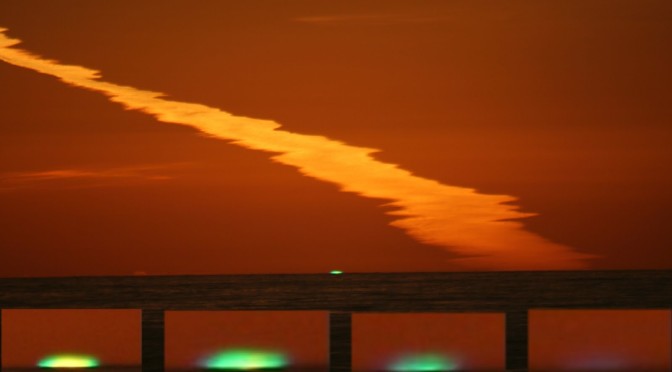By Anupum Pant
More often while setting than rising, if the conditions are right, a part of the sun (on the top) can appear green. This happens for very short interval lasting for about 2-3 seconds and is considered a rare phenomenon. Since it is green and lasts for a very small interval, it is also called the green flash, emerald flash or green ray. If you have ever captured it or plan to do it in the future, do share your results with me through mail/twitter. [See the animation] [Real GIF]
What does it look like?
Sometimes the sun’s rim can appear green (in optically zoomed images). Otherwise, when the sun is set, for a brief moment, it appears as if a part of sun has separated from the main body and has turned green. It is usually seen as a horizontal line, like in the video below. But, a few lucky ones have captured complete green auras too.
Why does it happen?
The sun gives out a white light, which contains all the colors – Green is one among them. Normally, our eye isn’t able to resolve the separate colors and sees them as a mixture which is white. When the sun sets, our atmosphere acts like a prism and bends the colors. A few colors get bent more than others. For example, green bends more than red. As a result the two colors get separated enough to be resolved by our eye. But the right amount of bending happens only if the atmospheric conditions are right.
In extremely rare cases, blue or violet flashes have been reported. [image]
For a detailed explanation you can go through this – [Geometric Optics of Green Flashes]
At poles where the sun moves in a different manner, probably the green ray can last much longer. Admiral Richard Byrd has claimed to have seen this green flash for 35 minutes while on an expedition to Antarctica.
